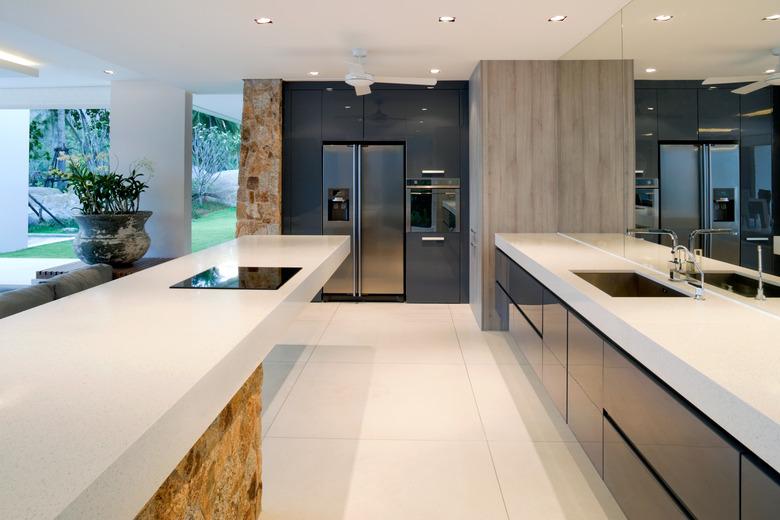How To Stain Formica Cabinets
Whether the laminate countertops are old or simply out of style, staining these types of surfaces can change up the look of a living space and increase the wow factor.
A good Formica stain can create a sleek surface, hide tiny flaws or bring back the shine on a dull expanse of countertop. From gel stains to paint — plus, complete kits that can make a bland countertop stylish — there are many ways to change up and redesign Formica.
Tip
The best way to change the style of the existing Formica countertop is to stain or paint the surface. This saves time and money in the long run.
Cleaning Laminate Countertops for Staining
Cleaning Laminate Countertops for Staining
A countertop stain remover should be left on a dirty laminate surface for 20 minutes. This will pull up dyes from spices and sauces, oils from frying and sautéing, grease from work projects and other viscous materials that have found their way into the nearly impenetrable material.
A commercial countertop stain remover or degreaser can take out ground-in grease and grime without affecting the surface, according to Formica. Leave it on the laminate surface for a minimum of 20 minutes, up to an hour, so that it can penetrate oils or soap buildup.
Using Organic Formica Cleaners
Using Organic Formica Cleaners
Cleaning the countertop thoroughly ensures that you've removed all of the oils, tiny food particles and other substances from the surface that can cause bubbling or peeling in the future. This can be done effectively with common household cleaners.
A good organic laminate countertop cleaner is a mix of 1 part baking soda to 1 part water. Make a paste and spread it on the areas of the Formica surface that have the most stains or tiny scratches.
You can finish the cleaning process by spraying the Formica countertop down with rubbing alcohol. Thoroughly wipe the area to remove any trace of the cleaner.
Gel Stain on Laminate Countertop
Gel Stain on Laminate Countertop
Gel is one of the more popular stains used on Formica countertops by do-it-yourself warriors. They are durable and come in a wide variety of colors. Using a gel stain on laminate countertops works well and can last a longtime if the surfaces have been properly prepped.
A gel stain will require a few coats to create a slick surface that sticks well to the roughed-up laminate countertop. If only a thin coat or two are applied, then the stain job may begin to peel, crack or chip.
Always use gel stain in a well-ventilated area, because the fumes can be overwhelming, particularly when working on an area over a lengthy period of time.
How to Stain Formica
How to Stain Formica
Use a 320-fine grit piece of sandpaper over the surface of the laminate. Bob Vila suggests going over the counter twice to ensure that the protective coating has been removed. Wash the area down thoroughly before staining. After the area has been well prepped and is rough to the touch, use painter's tape to mark off areas that you don't want to have stained. Pay particular attention to corners and backsplashes, which can get splattered by the stain.
Use even strokes in small batches across the surface of the Formica countertop to cut down on streaks or uneven shades and thickness. Allow each coat to dry thoroughly before applying the next layer of stain. This ensures that the next coat won't have ripples or bubbles as it moves across the tacky or wet previous layer.
